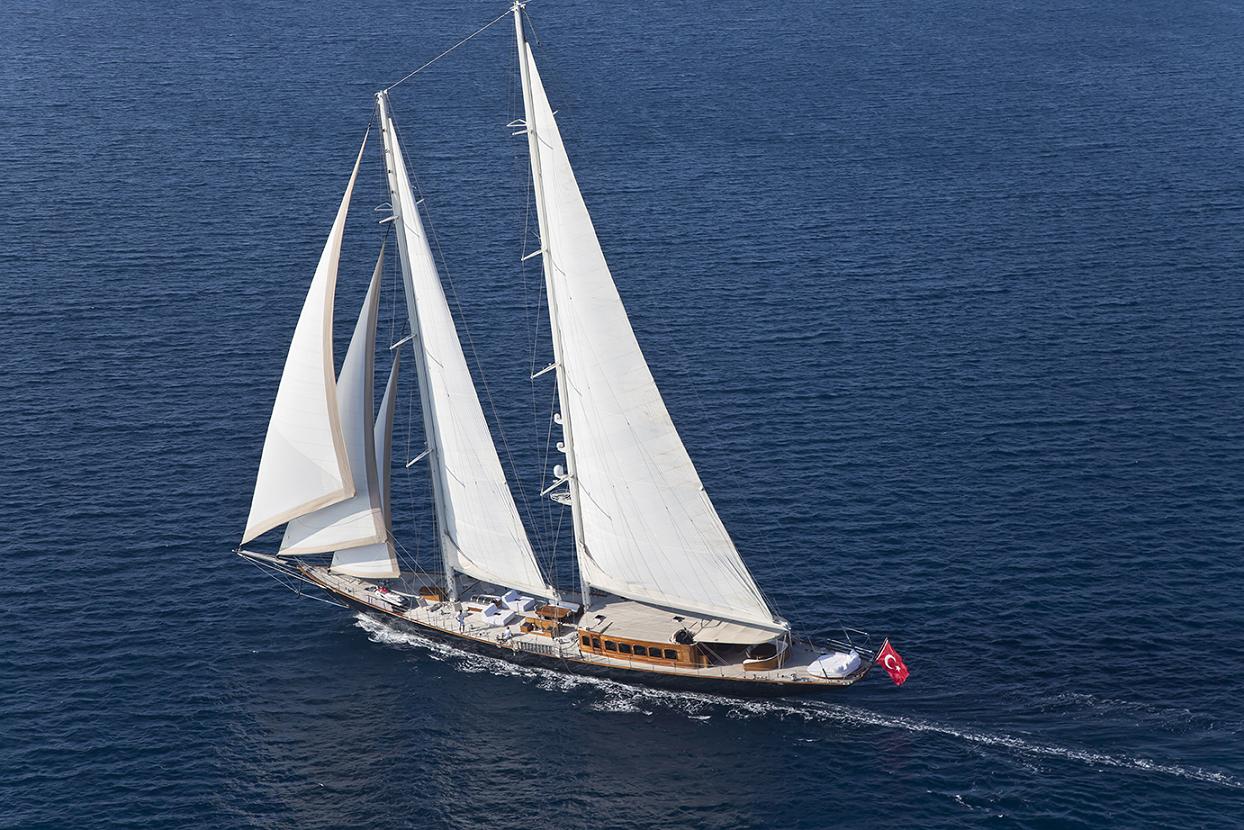The different types of sailboats, explained
Here’s what’s really going on when we talk about boats with sails
Unlike cars or motorcycles, boats and yachts are really much more diverse vehicles. Their land-dwelling counterparts are constrained by the size of parking spaces and even the width of roads, whereas a boat just isn’t. They are, then, limited only by the need to actually float on water, and should also have a means of propulsion to get where they need to go.
One of the earliest forms of motive force is the wind, which boats have harnessed since time immemorial, making sailboats an exciting and also difficult craft to pilot. In this article, we’ll try to demystify the many terms and names that so often follow these yachts around.
The types of sailboats
Perhaps the easiest way to classify a sailing boat is by its use, much like we did in this powerboat article.
Dinghies. While dinghies are also small enough to be propelled by oars, a sailing dingy can also, well, be sailed. A person or two can fit in them, and we recommend all beginners learn to sail in one.

Cruisers. Like their power-propelled-peers, sailing cruisers are akin to sportcars. Their sleek, sporty profiles are a pleasure to behold, and even an average sailor will be able to enjoy their performance. Smaller cruisers under 30’ are usually called day cruisers, with less outfitting. Larger cruisers around 30’ to 85’ have more amenities, like the Jeanneau Sun Odyssey 410. Anything larger can be considered a superyacht, really.
Image courtesy of sailing.org.Racing sailboats. Like purpose-built race cars or racing motorbikes, these boats only have features on them that add to their performance. They are built with fin keels and feature high performance laminate sails for speed.

Bluewater sailboats. This type of sailboat is meant to cross oceans, or sail ‘blue waters’, like the Jeanneau Sun Odyssey 490. These sailboats are heavier for better stability, and all their components are made tougher to withstand the rigors of extended time out at sea in all weather conditions.
Identifying a sailboat by the sails and masts
Broadly speaking, sailboats are quite easily identified by the number of masts and sails she carries. A mast is the tall spar that is erected vertically (or almost vertically) on the centre line of the vessel.
A sloop is a sailboat with one mast, one mainsail, and one headsail. Check out the simple image below for a better understanding.

A cutter has one mast and mainsail, but has two or more headsails. This allows the vessel flexible sail combinations in different wind conditions. It’s called a cutter because this rig cuts the triangle between the headstay (aka forestay) and main mast. Check out this little illustration on Wikipedia for a clearer picture on what a headstay is.
A ketch has a secondary mast behind the main one, which is called a mizzenmast. On a ketch, the mizzenmast is placed between the rudderpost and mainmast, while a yawl places the mizzen aft of the rudderpost. The second mast is always shorter than the main one. This mast design, also called a split rig, provides more sail area than a single very tall main mast, making them easier to sail shorthanded.

A schooner is a sailboat with multiple masts. The main mast is always the tallest, and as they are a lot more complicated to pilot and own, it’s rare to see a schooner as a pleasure craft today.
What about hulls?

We know by now that the number of hulls directly correlate to stability, and therefore catamarans and trimarans are the favoured builds for modern sailboats. Catamarans have the added bonus of having more real estate than a monohull, like the Leopard Catamarans 58.

Trimarans on the other hand are less popular as pleasure boats, but highly used as racing sailboats. This is because the extra width of the vessel means more difficulty finding a fitting berth, while the hulls on both sides can give the craft more speed when manoeuvring without overturning.
The depth and complexity of sailboats – even in this article there are many technical terms – make them less approachable than regular motorboats. The entry to the world of sailboating may be more difficult, but mastery of this complicated – and historied – skill makes it all the more rewarding. Is the sailboat life for you? Get in touch with us and we’ll help you decide.

